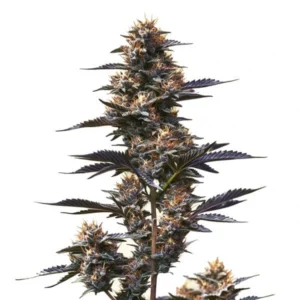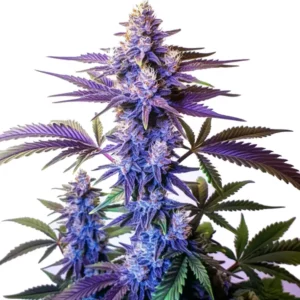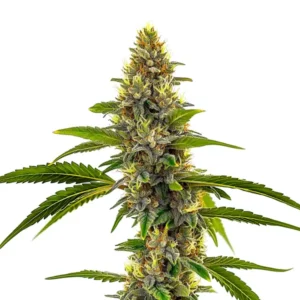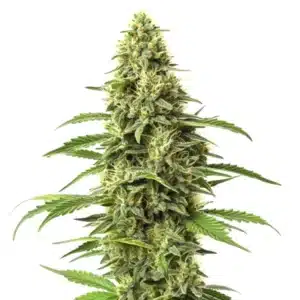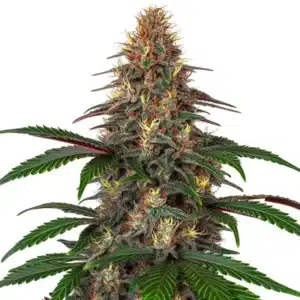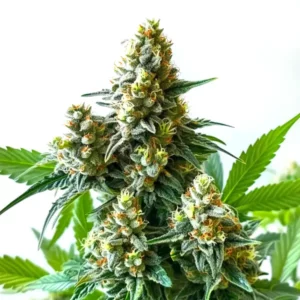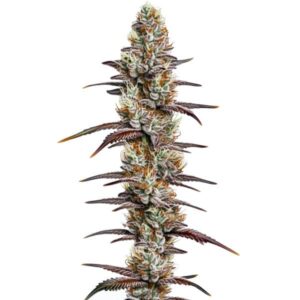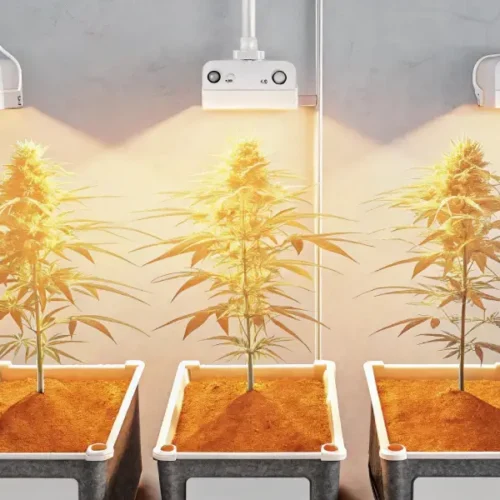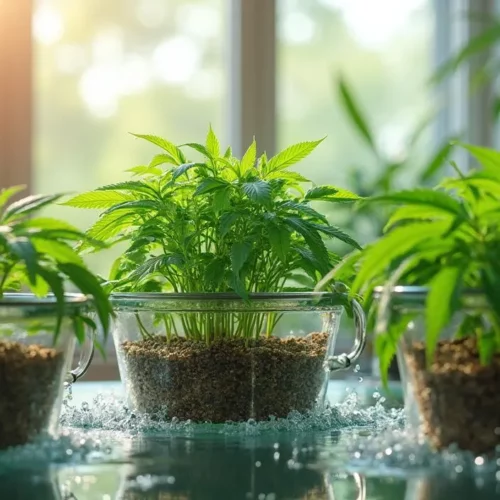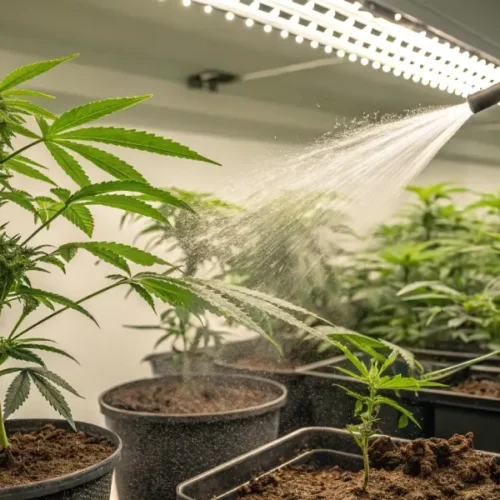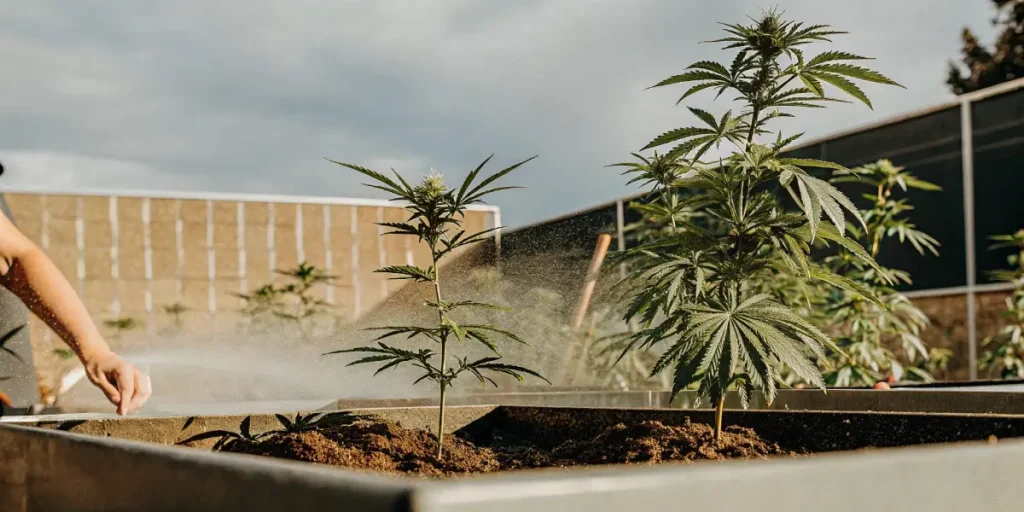
Outdoor Cannabis Care: Master How Often to Water Marijuana Plant Outside
Environmental Conditions and Their Impact
Temperature and Humidity Considerations
Outdoor conditions play a major part in answering how often to water marijuana plant outside. Warm, dry days demand more frequent watering, while cooler, humid days let you ease up on watering. Temperature and humidity affect water loss from the soil and plants. When heat is high and air is dry, evaporation increases. Monitoring the weather closely helps you adjust your watering schedule to keep your plants healthy and thriving.
When the temperature rises, the soil dries quickly, and your plants need water sooner. Keeping an eye on local weather patterns and humidity levels is essential. A simple check each morning can indicate whether your soil has lost moisture overnight. This observation aids in planning how often to water marijuana plant outside to ensure your cannabis receives enough water without overdoing it.
Recommended Strains
Banana Cream
 THC: 28% - 30%
THC: 28% - 30% Type of seed: Feminized
Type of seed: Feminized Phenotype: Mostly Sativa
Phenotype: Mostly Sativa Day to flower: 9 - 10 weeks
Day to flower: 9 - 10 weeks
Banana Kush
 THC: 17% - 21%
THC: 17% - 21% Type of seed: Feminized
Type of seed: Feminized Phenotype: Mostly Indica
Phenotype: Mostly Indica Day to flower: 8 - 9 weeks
Day to flower: 8 - 9 weeks
Rainfall and Natural Watering Patterns
Rainfall is an important factor when determining how often to water marijuana plant outside. Natural rain can provide ample hydration, reducing the need for extra watering. However, inconsistent rainfall may require supplemental watering on dry days. Observing weather forecasts and local rain patterns allows you to adjust your watering schedule effectively. When rain is abundant, your watering routine may change to prevent overwatering and maintain soil balance.
Besides to rain, dew formation overnight can add moisture to the soil. These natural watering patterns reduce the need for manual watering in some cases. If the sky remains clear for several days, you may need to step in with additional water. The challenge lies in finding a balance that keeps the soil moist without causing waterlogged conditions, ensuring optimal growth.
Promos & Deals
Soil Composition and Drainage Factors
Soil Texture and Water Retention
The type of soil you have significantly influences how often to water marijuana plant outside. Sandy soils drain quickly, causing rapid water loss, while clay soils retain water longer but may drain poorly. Knowing your soil texture helps in deciding the watering frequency. Sandy soils often require more frequent watering, whereas soils with more organic matter hold moisture, reducing the need for constant irrigation.
Soil water retention also depends on the structure and composition of the earth. Well-aerated soils promote healthy root growth and effective water absorption. Testing your soil and adding organic matter if necessary can improve water retention. By managing the soil properties, you create an environment where your cannabis plants receive steady moisture, thereby refining how often to water marijuana plant outside based on actual soil conditions.
Amending Soil for Optimal Drainage
Improving soil drainage is key when planning how often to water marijuana plant outside. Adding organic compost and perlite can help balance water retention and drainage. These amendments improve soil structure, allowing excess water to escape while holding enough moisture for the plant’s needs. A well-drained soil prevents root rot and promotes vigorous growth, making watering more effective and efficient.
Enhancing soil quality through amendments can reduce the watering frequency needed by your cannabis plants. When the soil drains properly, water reaches the roots evenly without pooling. This adjustment allows you to water less frequently while still ensuring that your plants receive the hydration they need. Experimenting with different soil amendments may reveal the perfect balance for your outdoor garden, optimizing your overall watering schedule.
Growth Stage Considerations
Watering Needs During Seedling and Vegetative Phases
During the early growth phases, knowing how often to water marijuana plant outside is vital for a healthy start. Seedlings and young plants require consistent moisture to establish roots. They are more sensitive to both overwatering and underwatering. In these stages, a gentle, frequent watering schedule keeps the soil consistently damp without flooding the delicate roots. Regular monitoring and light watering can help maintain an optimal environment for early growth.
Young plants benefit from a light watering routine that avoids waterlogging. As they establish, their roots gradually develop deeper access to moisture. During these phases, adjust your watering frequency based on soil moisture levels and plant appearance. Over time, the plants become more resilient and require less frequent watering. Following this method ensures that your outdoor garden develops steadily and healthily.
Adjusting Watering During the Flowering Stage
As cannabis plants enter the flowering stage, their water requirements change. The focus shifts to supporting bud development, and excessive moisture can lead to mold and other issues. Knowing how often to water marijuana plant outside during this stage means you must be careful with the amount and frequency of water applied. Reducing water slightly during flowering helps maintain proper nutrient uptake and prevents excess humidity around the buds.
In this stage, less frequent watering may be beneficial compared to earlier phases. The balance between moisture and air circulation is key to healthy bud formation. Regular soil checks become even more important as the plant’s water needs evolve. Adjusting your watering schedule accordingly ensures that your flowering plants develop dense, quality buds while minimizing the risk of water-related problems.
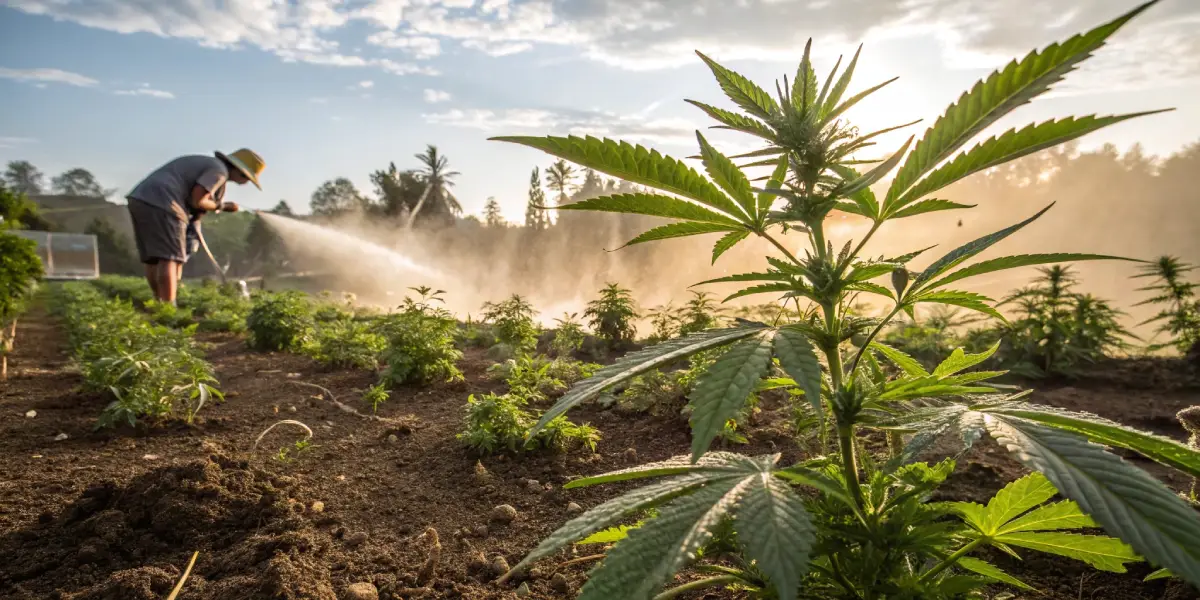
Best Practices for Outdoor Watering
Morning Versus Evening Watering Benefits
Deciding when to water is as important as determining how often to water marijuana plant outside. Watering in the morning takes advantage of cooler temperatures and natural sunlight, helping plants absorb water before the heat of the day sets in. Morning watering also reduces evaporation and allows the leaves to dry quickly, lowering the risk of fungal issues. Evening watering, on the other hand, may be more effective in very hot climates, but it comes with risks of prolonged dampness.
Choosing the best time to water outdoor cannabis can improve overall plant health. In many cases, morning watering is recommended because it provides moisture during the hottest part of the day while reducing water loss. Observing your local climate can help you decide the optimal watering time for your outdoor garden. Fine-tuning your routine based on time-of-day effects makes a significant difference in how often to water marijuana plant outside.
Watering Techniques to Minimize Waste
Using the right watering techniques can reduce water waste and optimize plant hydration. Drip irrigation systems and soaker hoses are effective methods for outdoor watering. They deliver water directly to the plant roots, ensuring that moisture reaches where it is needed most. Employing these techniques allows you to control the water flow, minimizing waste and ensuring that your watering schedule is both efficient and economical.
Efficient watering methods also reduce the risk of overwatering, which can harm your plants. Using targeted irrigation means that water is distributed evenly and consistently. This method helps you manage how often to water marijuana plant outside while conserving water. Adopting smart techniques not only benefits your garden but also supports environmental sustainability, making your overall growing process more responsible and cost-effective.
Monitoring and Adjusting Watering Frequency
Signs of Overwatering and Underwatering
Recognizing the symptoms of overwatering and underwatering is essential in determining how often to water marijuana plant outside. Overwatered plants may show yellowing leaves and mushy stems, while underwatered plants display wilting and dry soil. Learning to read these signs helps you adjust your watering frequency effectively. Observing plant behavior and soil moisture regularly ensures that your cannabis plants get the right amount of water without being stressed by excess or deficiency.
Watching your plants closely provides a natural indicator of their hydration needs. Changes in leaf color, soil texture, and overall plant vigor are signs to consider when adjusting your watering schedule. A careful balance is needed to keep your plants healthy, and this balance is influenced by how often to water marijuana plant outside. Regular observation helps you catch issues early and make timely adjustments.
Regular Soil Moisture Checks and Adjustments
Frequent soil moisture checks are vital for managing how often to water marijuana plant outside. Using a moisture meter or simply digging a small hole can tell you if the soil is dry or still retaining water. This regular monitoring allows you to adapt your watering routine to real-time conditions. Adjustments based on soil moisture help prevent both overwatering and underwatering, ensuring that your plants remain in a balanced environment that promotes steady growth.
Consistency in checking soil moisture leads to a more effective watering schedule. When you keep track of the moisture levels, you can determine if the frequency needs to be increased or reduced. This proactive approach ensures that your outdoor cannabis garden receives just the right amount of water. Over time, your routine will naturally adjust to the changing needs of the plants and the environment, creating a healthy balance that supports long-term growth.
How Often to Water Marijuana Plant Outside in Practice
Your local environment, soil type, and growth stage all determine how often to water marijuana plant outside. Testing your garden by feeling the soil and watching your plants closely helps you understand the unique needs of your outdoor setup. Experiment with different frequencies until you find the balance that works best. Remember that even slight variations in climate and weather can affect your watering schedule, so regular adjustments are key to long-term success.
Real-life practice shows that there is no one-size-fits-all answer to how often to water marijuana plant outside. Each garden is unique, and the best approach is to observe and respond to the plants’ signals. Consistent monitoring and gradual adjustments help you refine your schedule. With time, you will develop a watering routine that perfectly suits your outdoor cannabis garden, ensuring healthy growth and abundant harvests every season.

FAQs about how often to water marijuana plant outside
What factors influence how often to water marijuana plant outside?
Many factors influence how often to water marijuana plant outside, including climate, soil type, plant age, and current weather conditions. Warmer temperatures and dry soil increase water needs, while cooler weather and higher humidity reduce them. Regular monitoring and careful adjustment based on these factors help maintain optimal soil moisture. Observing these variables closely ensures your plants receive just the right amount of water consistently.
How can I tell if my outdoor cannabis plant is receiving the proper amount of water?
Indicators such as firm, healthy leaves and evenly moist soil show your outdoor cannabis plant is receiving the proper water. Overwatered plants may exhibit yellowing leaves and soggy soil, while underwatered ones display wilting and dry, cracked soil. Regularly checking the soil and plant appearance helps determine if adjustments are needed. Using a moisture meter can provide additional accuracy, ensuring the watering schedule aligns perfectly with your plant’s needs.
What tools are most effective for monitoring soil moisture in outdoor cannabis gardens?
Effective tools for monitoring soil moisture in outdoor cannabis gardens include moisture meters, simple soil probes, and manual finger tests. These methods provide accurate readings of the soil’s dampness, allowing you to adjust your watering routine accordingly. By combining these techniques, you can reliably determine how often to water marijuana plant outside and maintain optimal moisture levels for vigorous growth and a healthy, productive garden.



